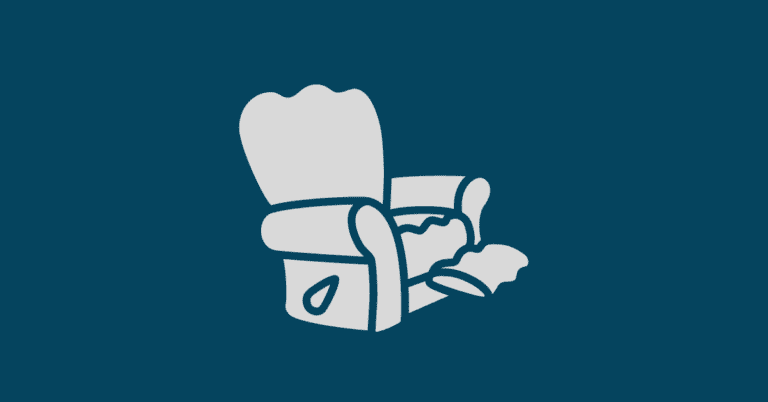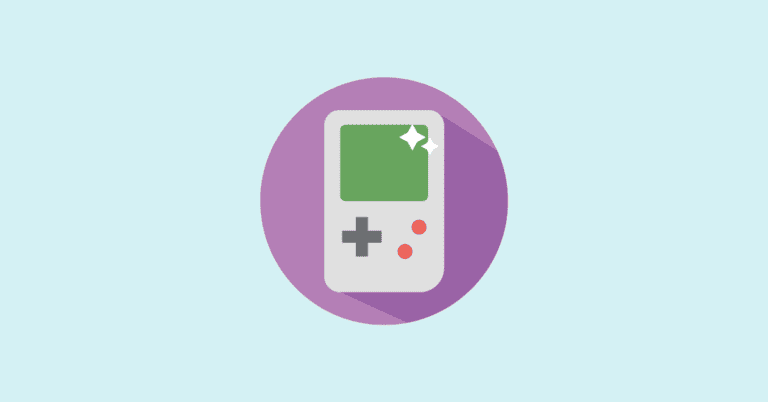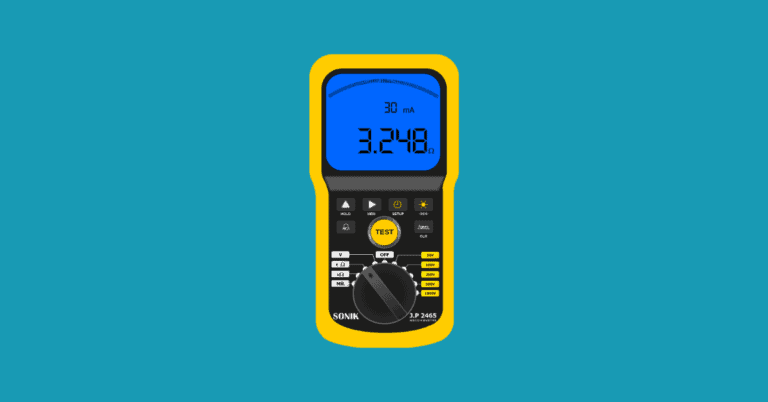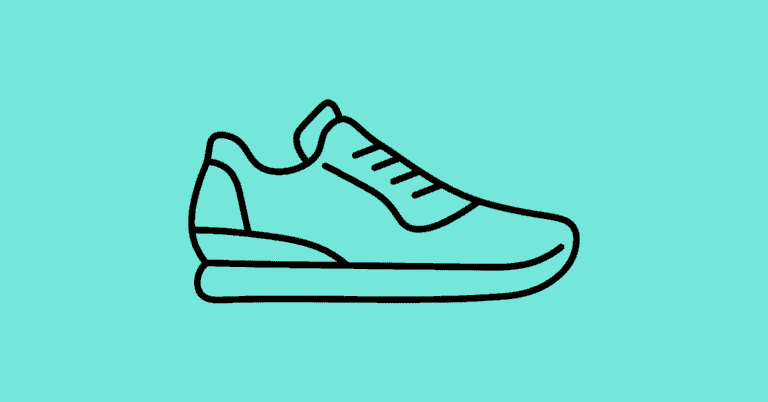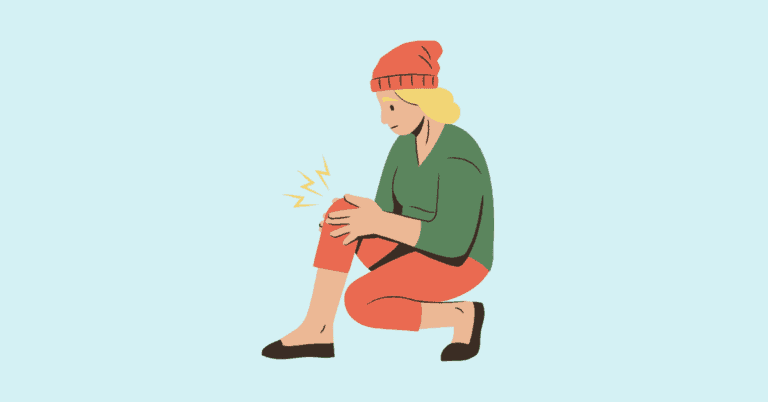Best Mattress For Back And Hip Pain: 7 Great Options
Sleep is a fundamental aspect of our lives.
In every single new patient encounter, I make it a point to inquire about sleep because its impact on health cannot be overstated. Regardless of the injury, pain, or condition someone is dealing with, sleep plays a crucial role in influencing healing, mental well-being, pain levels, and overall health.
I’m quickly learning that hip and back pain occurring concurrently is more common than what I once perceived, likely because of the interplay between the hip joint and back. For these individuals, their plan of care differs in each unique case.
But pain management is one big commonality. Managing pain is important; of course, because a person shouldn’t have to be in pain, but also effective pain management is what is going to allow progress in therapeutic exercise, which is ultimately what is going to lead to long-term improvement.
In any case, if your mattress is old and worsening your pain or affecting the quality of your sleep, then that’s a big enough reason to look for a new mattress.
So, Best Mattress For Back And Hip Pain…
If the best attributes of each mattress had to be summarized in a few words, here is the run down:
- Best Overall: Bear Elite Hybrid
- Best Memory Foam Mattress: Nectar Memory Foam
- Best Budget-Friendly Hybrid Mattress: DreamCloud Hybrid
- Best Durable, Organic Latex Mattress: PlushBeds Botanical Bliss
- Best Full Foam Mattress: The Purple Mattress
- Best Mattress for Heavier Individuals (over 250lb): Nolah Evolution 15”
- Best “Plushiest” Mattress: Puffy Lux Mattress
However, it’s important to note that these categories aren’t rigid. Personal preferences and individual differences play a significant role. For instance, a person that is heavier may feel just as supported with the firmer option of the botanical bliss mattress.
How were these mattresses selected (current research on mattress quality for back and hip pain)?
The mattresses featured in this article were chosen based on current research and practical experience. While existing research suggests that mattresses labeled as “medium-firm” offer better support and pain management for back pain, specific guidelines for individuals experiencing both hip and back pain, or even hip pain alone, are lacking1,2,7. Although a study focusing on pregnant women with pelvic girdle pain showed significant improvement with a new memory foam mattress and pillow alongside standard treatment, its applicability to others experiencing hip pain is limited3.
Few researchers have found that a newer “medium firm” mattress (they used foam and latex blend medium firm mattresses in this study) lead to significant, progressive improvements in subjective back pain discomfort and stiffness over the 12 week period5.
Still, there is very little objective evidence to support the types of mattresses, such as foam, hybrid, innerspring, that would be optimal for individuals experiencing back and hip pain.
Moreover, pain experiences vary widely among individuals, encompassing not only subjective reports but also intricate biological processes within the brain’s pain pathways4. What works well for one person may not necessarily benefit another due to these inherent differences.
Everything considered, the goal of this article was to give you a good selection of high-quality mattresses. While falling within the “medium-firm” category, these mattresses vary in their construction but share attributes such as comfort, pressure relief, and most importantly – are backed by positive feedback from individuals who have experienced back and hip pain.
The generous trial period offered by these mattresses is the cherry on top, ensuring that you can determine if the mattress is right for you before committing to it.
What is the best mattress for you?
All seven of these mattresses offer pressure relief and are uniquely supportive.
The best option for you depends on your preferences and predominant sleep positions. For example, if you sleep on your stomach, a firmer mattress that supports your pelvis might be more suitable. It’s also essential to consider individual preferences. For instance, if you’ve always preferred fully foam mattresses, you may lean towards options like the purple mattress. Conversely, if you prefer mattresses with springs, a hybrid like the DreamCloud Hybrid might be more appealing.
Summary Table of Mattress Specifications:

1. Bear Elite Hybrid
Overview
The Bear Elite mattress is a hybrid, constructed with a combination of an innerspring system and foam. Specifically, it uses copper-infused memory foam, which along with the coil spring system, is said to dissipate excess heat, resulting in a cooler sleeping surface.
One of the standout features of this mattress is its customizability, offering three different firmness levels to choose from: Soft (5/10 on the firmness scale), Medium (6/10), and Firm (7/10). Below, you’ll find recommendations for selecting the ideal firmness level based on your sleeping position and body weight.
Furthermore, this mattress is responsive and springy, allowing for easier position changes compared to mattresses where you feel like you sink into the mattress. This feature makes it particularly well-suited for combination sleepers who frequently change positions throughout the night. Despite its responsiveness, the mattress still provides good motion isolation, meaning movement on one side of the mattress does not significantly transfer to the other side. If you share the bed with a partner and are motion-sensitive, you can rest assured that you’ll sleep undisturbed with this mattress.

This is a general recommendation, and for more guidance, I suggest getting in touch with their mattress experts on the Bear website.
Top features
- Three different firmness options available (refer to above table), catering to back sleepers, side sleepers, and most stomach sleepers
- Responsive mattress allow for easy position changes, making it ideal for combination sleepers
- Good temperature regulation allow a fairly cool sleeping experience
- Good motion isolation, allowing undisturbed sleep
Considerations
- Pricier option
- Heavier stomach sleepers may find the “firm level” sufficient, or may prefer a firmer mattress
Specifications

Cost
$1499
2. Nectar Memory Foam Mattress
Overview
The Nectar memory foam mattress is arguably one of the most renowned options in the memory foam mattress market. Users praise its supportiveness and durability. It’s also remarkably budget-friendly; I’m honestly not sure how they are able to offer such a great price.
While the supportive and pressure-relieving features of memory foam are well-known, one drawback is that memory foam tends to retain heat due to its absorption of body heat. That said, one advantage is that this mattress incorporates gel memory foam, which means it warms more slowly and provides a cooler sleeping experience than traditional memory foam. Nonetheless, it may not remain cool throughout the entirety of the night, especially for those who tend to sleep hot. Personally, I found the warmth of the mattress to be comfortable.
Additionally, as is common with memory foam mattresses, the Nectar is less responsive, making it somewhat harder to change positions and get out of bed.
Top features
- Great pressure relief for side and back sleepers
- Supportive for lightweight stomach sleepers (less than 130lb) and some average weight stomach sleepers.
- Very good motion isolation, ideal for motion-sensitive sleepers
- Affordable price
Considerations
- While gel memory foam likely warms slower than regular memory foam, this still may be a warmer mattress for some
- Average to heavier stomach sleepers may benefit from a firmer mattress
- Less responsive, which may make it harder to get out of bed or change positions
Specifications

Cost
$649
3. DreamCloud Hybrid
Overview
This DreamCloud mattress is another hybrid mattress, which means it combines inner coils and foam. Specifically, its construction incorporates gel memory foam, providing excellent support.
Like other hybrid mattresses, the inner springs offer good responsiveness, resulting in a bouncy feel that makes it easier to change sleeping positions. This feature is particularly beneficial for combination sleepers who tend to switch positions frequently throughout the night. Additionally, the DreamCloud hybrid performs decently in motion isolation, making it a suitable option for couples, especially if one partner is a light sleeper, allowing them to sleep soundly.
What’s more, it’s also an affordable choice, offering great value for its features.
Top features
- Great option for back sleepers and most side sleepers
- Effective at motion isolation, making it a suitable mattress for couples, especially those sensitive to motion.
- Responsive design facilitates easier positional changes
- Affordable price
Considerations
- Not the best option for heavier stomach sleepers (more than 250lb) who may require a firmer mattress
- May be too firm for lightweight side sleepers (less than 130lb)
Specifications

Cost
$665
4. Plushbeds Organic Latex Mattress – The Botanical Bliss
Overview
The PlushBeds Organic Latex Mattress is highly praised for its comfort and durability. Latex, known for its resilience, is a durable material that, with proper care, can last longer than traditional mattresses (typically 10-20 years or even longer in some cases).
Its responsive design makes it effortless to change positions, a valuable feature for combination sleepers. Additionally, being an organic mattress adds to its appeal, offering a natural and eco-friendly sleeping experience.
However, one drawback is that it has less motion isolation, so it’s important to be aware of this if you are sharing the bed with a partner who is a light sleeper.
Botanical bliss latex mattresses come with two different firmness levels to choose from. Below, you’ll find recommendations for selecting the ideal firmness level based on your sleeping position and body weight.

This is a general recommendation, and for more guidance about whether you would benefit from a soft or firm mattress (in the medium-firm range), I suggest getting in touch with their mattress experts on the Plushbeds website. For reference, 75% of their customers are satisfied with the “medium” level firmness option.
Top features
- Durable and long-lasting latex construction
- Offers two different firmness levels to choose from, accommodating both side sleepers and back sleepers
- Responsive mattress thanks to the latex foam
- Suitable for combination sleepers who toss and turn
- Organic construction for environmentally-conscious consumers
Considerations
- May not provide enough support for heavier stomach sleepers, who may require a firmer option
- Limited motion isolation, which may affect light sleepers sharing the bed with a partner
- Bigger investment compared to some other mattresses
- Botanical bliss also offers mattress height options based on weight: 9” (best for up to 200lb), 10” (best for 200-250lb), 12” (best for 250+ lb).
Specifications

Cost
$1,699 (price for 9” Queen size)
5. Purple Mattress
Overview
The Purple mattress boasts a distinctive foam design, a hallmark feature shared among all Purple mattresses. What sets it apart from other foam mattresses is its grid-patterned foam layers, which is meant to provide adaptive support and superior temperature regulation. This design ensures a cool sleep experience, particularly beneficial for individuals who tend to run hotter at night.
Furthermore, the foam construction contributes to the mattress’s bouncy and responsive feel, making it easier to change positions unlike a mattress that makes you feel “stuck in place”. Even with its responsiveness, the mattress does really well with isolating motion, ensuring that movements on one side of the mattress are not felt to the same extent elsewhere on the mattress.
Top features
- Excellent for all back sleepers
- Suitable for light to average weight stomach sleepers
- Effective motion isolation allows sound sleep for sensitive sleepers throughout the night
- Responsive design facilitates easier positional changes and getting out of bed
- Allows temperature regulation
Considerations
- Lightweight side sleepers (less than 130lb) may require a softer mattress
- Heavy stomach sleepers (more than 250lb) may require a firmer mattress
Specifications

Cost
$1,099
6. Nolah Evolution 15”
Overview
The Nolah Evolution 15” offers great customization with three different firmness levels to choose from, similar to the Bear Elite Hybrid, but with additional padding given its seven-layer construction.
Below, you’ll find recommendations for selecting the ideal firmness level based on your sleeping position and body weight. With its highest firmness level (rated 7-8 on the firmness scale), this may particularly benefit individuals of heavier weights, even if they predominantly sleep on their stomach.
As a hybrid mattress featuring an inner coil system and Nolah’s air foam layers, it provides a springy and responsive feel, which is beneficial for combination sleepers as it allows for easier changes in sleep position. Evenmore, its construction facilitates excellent temperature regulation and heat dissipation, ensuring a cool sleep experience.

This is a general recommendation, and for more guidance, I suggest getting in touch with their mattress experts on the Nolah Mattress website.
Top features
- Three different firmness options accommodate to varying types of sleeping positions – side, back, and stomach
- Great temperature regulation provides a cool sleeping experience
- Responsive design facilitates easy positional changes and getting out of bed
Considerations
- Motion isolation is not great, so if you are sharing the bed with a partner and are motion-sensitive during sleep, you may want to weigh your options
- Pricey option compared to some other mattresses
Specifications

Cost
$1,624
7. Puffy Lux Mattress
Overview
The Puffy Lux mattress is a hybrid that incorporates memory foam and an inner coil system; it stands out as the plushest option within the medium-firm range, bordering on medium-soft. It delivers a luxurious and close-conforming sleep experience, catering to individuals who prefer softer mattresses or are sensitive to firmer ones. If you’ve found traditional medium-firm mattresses to feel uncomfortably firm, potentially exacerbating hip and back pain, or if you simply prefer a softer feel, the Puffy Lux is an excellent choice.
Moreover, it excels at isolating motion on one side of the mattress, ensuring undisturbed sleep for those who are sensitive to their partner’s movements.
On the other hand, this mattress does not offer the best responsiveness –which is good to be aware of – making changing positions more challenging than a responsive mattress. Nonetheless, if you tend to remain in one position throughout the night or only shift mildly in your sleep, the Puffy Lux should still provide a comfortable sleep experience.
Top features
- Great option for all side sleepers
- Supportive for light to average back sleepers
- Offers excellent motion isolation, making it suitable for couples sensitive to motion
Considerations
- Stomach sleepers and heavier back sleepers (more than 250lb) may require a firmer mattress
- Less responsive, which may make it harder to change position and get out of bed
Specifications

Cost
$1,499
How Does Sleep Position And Body Weight Factor Into Mattress Selection?
As previously discussed, a medium firm mattress is generally found to benefit individuals experiencing back pain1,2,7. However, objective data considering sleep position and body weight alongside specific mattress characteristics remains limited. Sleep experts and healthcare professionals often rely on ergonomic principles, such as maintaining a neutral spine, and consider weight distribution across various sleep positions when making recommendations for people experiencing hip and back discomfort.
That said, it is unclear if there is one optimal sleep position because it is very dependent on the individual9.
Here are some general guidelines:
Bodyweight
Heavier individuals are likely to compress the mattress more than lighter individuals. So, lighter individuals tend to benefit from a softer mattress that will support or contour to their body alignment evenly. On the other hand, heavier individuals may find firmer options more beneficial to prevent excessive sagging, which can lead to increased pressure on certain segments of the body. Again this is generalized, and factors such as body weight distribution (such as carrying more weight in the hips) and being a combination sleeper can also influence the suitability of a mattress for back pain and hip discomfort.
Sleep Positions
Back Sleepers
Sleeping on your back typically distributes weight evenly across the backside of the body in contact with the mattress. Maintaining a neutral torso position is generally easier compared to other sleep positions.
Side Sleepers
Individuals who sleep on their side distribute their weight predominantly on one side, particularly on prominent areas like the hips and shoulders. Side sleepers often require a slightly softer mattress than back sleepers to allow for contouring of the entire side of the body, promoting more even distribution of compression and reducing pressure around the hip and shoulder joints.
Stomach Sleepers
Stomach sleepers distribute weight across the chest and hips. In most cases, they benefit from a firmer mattress within the medium-firm range compared to back and side sleepers. This firmer option helps prevent the hips from sagging too far forward into the mattress, maintaining better spinal alignment.
Overall, both sleep position and bodyweight were considered when creating the general guidelines for the mattresses with options for different firmness (Bear Elite, Botanical Bliss, and Nolah Evolution).
Additional Tips For Sleeping With Back Pain
- If you sleep on your back, try placing a pillow under the back of your knees to help promote the natural curve of the back.
- If you sleep on your side, try drawing your legs up (like in fetal position but maybe not as drastic). Also consider placing a pillow between your legs if you find it helpful.
- If you sleep on your stomach, try placing a thin or soft pillow under your hips. Also you may be better off using a low-profile pillow at the head rather than a taller pillow.
Additional Tips For Sleeping With Hip Pain
- If you are experiencing pain on the sides of the hip, consider sleeping on your back to help relieve pressure of the hips.
- If you have to sleep on your side, consider sleeping on the side with less pain, and try a pillow between your legs.
- If you must sleep on your stomach, placing a thin pillow under your hips can still help.
Back pain FAQ
What causes back pain?
Back pain is a multifaceted issue, often stemming from a combination of factors. It’s one of the most complex regions of the body and ranks among the most common sources of chronic pain complaints. The onset of back pain can vary widely among individuals. Some may experience it suddenly after a specific incident, such as lifting a heavy object improperly or being involved in a motor vehicle accident. Others may find that back pain develops gradually over time, with the exact cause or trigger being less clear.
Regardless of the specific circumstances, trauma or overexertion of the back’s structures can play a significant role in the development of pain. This trauma can affect various components of the back, including muscles, ligaments, and bony structures.
Moreover, several factors can contribute to the development of back pain over time. For instance, stiff and tight muscles can play a role. When muscles in the back or surrounding areas become stiff or tight, they can increase stress on other muscles and connective tissues, exacerbating discomfort over time. This can create a cycle of pain and tension, as the body compensates for the affected areas, leading to further strain and discomfort.
When should I see a doctor for back pain?
Early interventions can often lead to better outcomes and prevention of further worsening. If you’re experiencing severe or persistent pain, pain accompanied by other symptoms like numbness or weakness, or pain following an injury, consult your healthcare provider about your symptoms. Additionally, if your back pain is interfering with your daily activities or quality of life, don’t hesitate to get in touch with your doctor to discuss your options.
What are my treatment options?
In the event that you consult your primary care physician about your back pain, further tests and measures may be recommended to better understand the underlying causes. Typically, conservative management serves as the initial approach to treatment, with physical therapy often being the first line of intervention. A conservative treatment plan for back pain is tailored to the individual, taking into account factors such as symptoms, physical impairments, and medical history.
Components of a conservative treatment plan may include activity modification, which involves adjusting daily activities to minimize strain on the back. Pain management strategies, such as medication or modalities like electrical stim or ice therapy, may also be employed to aid with pain relief. Additionally, strength and endurance exercises targeted at the back and core muscles are often prescribed to improve stability and support for the spine. Functional activity re-education may also be incorporated to help individuals learn proper body mechanics and movement patterns to prevent further injury and promote long-term spinal health. Overall, the goal of conservative management is to reduce pain, improve function, and enhance quality of life for individuals dealing with back pain.
The upside to back pain is that the vast majority of back pain cases can be effectively managed through conservative treatments – general timeframe is 8 to 12 weeks. Surgery is typically considered as a last resort when conservative treatments have failed to provide relief, or in cases where there is a clear structural issue that can be addressed surgically.
Hip Pain FAQ
What causes hip pain?
Hip pain can stem from a variety of sources, similar to back pain, involving muscles, tendons, the joint capsule, and other structures within the hip. One notable aspect of hip pain is that its location can often provide clues to its potential causes, which in turn can guide treatment options. For instance, pain located at the front of the hip is frequently associated with conditions like osteoarthritis or intra-articular issues within the joint itself. While, lateral hip pain (side of the hip pain) may be more indicative of muscular and tendon-related origins.
Of course, this isn’t set in stone. As always, individual cases vary, and there could be multiple factors involved in your hip pain, sometimes even overlapping conditions contributing to the discomfort.
When should I see a doctor for hip pain?
It’s important to pay attention to your body and seek medical advice if you’re experiencing hip pain that is persistent, severe, or significantly impacting your daily activities and quality of life. Additionally, you should consider consulting a doctor if your hip pain is accompanied by other symptoms such as swelling, warmth, redness, difficulty bearing weight on the affected hip, or if you have a history of hip injury or underlying medical conditions like arthritis.
Furthermore, if your hip pain is interfering with your ability to perform everyday tasks, participate in physical activities, or affecting your sleep, it’s advisable to seek medical evaluation.
What are my treatment options?
Treatment options for hip pain depend on the underlying cause and severity of the condition. In many cases, conservative treatments are recommended initially, with the goal of reducing pain, improving mobility, and enhancing overall hip function. Some common treatment options for hip pain include medications such as over-the-counter pain relievers or nonsteroidal anti-inflammatory drugs (NSAIDs) to alleviate pain and reduce inflammation.
Physical therapy is often prescribed to strengthen the muscles surrounding the hip joint, improve flexibility, and correct biomechanical imbalances. Therapeutic exercises, manual therapy techniques, and modalities such as heat or ice therapy may be included in a comprehensive physical therapy program.
Additionally, modifying activities that exacerbate hip pain and maintaining a healthy weight can help reduce discomfort and prevent further aggravation of the condition. Injections such as corticosteroids or viscosupplementation injections may be recommended to reduce inflammation and provide temporary pain relief for certain hip conditions. For individuals with significant structural damage or persistent symptoms despite conservative treatments, surgical intervention may be necessary, which can include procedures such as hip arthroscopy or hip replacement surgery.
Are my back and hip pain related?
The factors contributing to your hip pain can overlap with those contributing to the development of back pain. In many cases, this relationship stems from the interconnectedness between the hip and the back. The kinetic chain concept helps elucidate this relationship by emphasizing how every joint in our body is capable of various degrees and types of motion, with the surrounding joints influencing one another’s movements.
The connection between the hip and back is significant. When there are different movement patterns or limitations in the hip, the back often compensates in order to maintain function. This overcompensation can increase stress on the structures of the back, eventually resulting in pain. Clinically, this phenomenon is sometimes referred to as hip-spine syndrome. However, the relationship between hip and back pain is often more complex than a straightforward cause-and-effect scenario. In some instances, the primary symptoms may originate from either the hip, the back, or both, making it unclear which led to the other.
Fortunately, from a treatment perspective, pinpointing the exact pathoanatomical source of the pain may not be necessary. Research has shown that adopting a treatment-based approach, which involves identifying the patient’s physical impairments and symptoms, and then categorizing them into specific exercise regimens, can be effective in addressing both hip and back pain. This approach allows healthcare providers to tailor treatment plans to address the individual needs and contributing factors of each patient, ultimately leading to improved outcomes and pain management.
How Often Should A Mattress Be Replaced?
The lifespan of a mattress can vary depending on several factors, including the quality of the mattress, how well it’s cared for, and individual usage patterns. As a general guideline:
- Innerspring mattresses typically last for 8 to 10 years.
- Memory foam mattresses and hybrid mattresses typically last 8 to 12 years.
- Latex mattresses are known to be longer-lasting – generally 10 to 15 years.
It’s important to monitor the condition of your mattress regularly and consider factors such as sagging, loss of support, or discomfort. If you notice significant signs of wear and tear or if you’re no longer getting a restful night’s sleep, it may be time to consider replacing your mattress. Additionally, keep in mind that getting used to a new mattress on average takes about a month.
Bottomline
Finding a supportive mattress for hip pain and back pain can be challenging, but you have great options to consider.
With almost every high quality mattress, there will be people that dislike a mattress and some that swear by it. On top of considering the information here, also take your own experiences with past mattresses. Regardless, you do get a nice trial period to try out your mattress to make sure it’s the right fit for you.
References
- Ancuelle, V., Zamudio, R., Mendiola, A., Guillen, D., Ortiz, P. J., Tello, T., & Vizcarra, D. (2015). Effects of an adapted mattress in musculoskeletal pain and sleep quality in institutionalized elders. Sleep science (Sao Paulo, Brazil), 8(3), 115–120.
- Caggiari, G., Talesa, G. R., Toro, G., Jannelli, E., Monteleone, G., & Puddu, L. (2021). What type of mattress should be chosen to avoid back pain and improve sleep quality? Review of the literature. Journal of orthopaedics and traumatology : official journal of the Italian Society of Orthopaedics and Traumatology, 22(1), 51. https://doi.org/10.1186/s10195-021-00616-5
- Feldthusen, C., Fagevik Olsen, M., Ejnell, H., & Elden, H. (2021). Effects of a New Mattress and Pillow and Standard Treatment for Nightly Pelvic Girdle Pain in Pregnant Women: A Randomised Controlled Study. International journal of women’s health, 13, 1251–1260. https://doi.org/10.2147/IJWH.S335977
- Fillingim R. B. (2017). Individual differences in pain: understanding the mosaic that makes pain personal. Pain, 158 Suppl 1(Suppl 1), S11–S18. https://doi.org/10.1097/j.pain.0000000000000775
- Jacobson, B. H., Boolani, A., Dunklee, G., Shepardson, A., & Acharya, H. (2010). Effect of prescribed sleep surfaces on back pain and sleep quality in patients diagnosed with low back and shoulder pain. Applied ergonomics, 42(1), 91–97. https://doi.org/10.1016/j.apergo.2010.05.004
- Jacobson, B. H., Moghaddam, M., & Estrada, C. A. (2022). Mattress Coil Spring Fatigue and Weight-Bearing Support: Comparison of Weight-Bearing and Non-Weight-Bearing Springs. Journal of manipulative and physiological therapeutics, 45(5), 323–328. https://doi.org/10.1016/j.jmpt.2022.08.004
- Radwan, A., Fess, P., James, D., Murphy, J., Myers, J., Rooney, M., Taylor, J., & Torii, A. (2015). Effect of different mattress designs on promoting sleep quality, pain reduction, and spinal alignment in adults with or without back pain; systematic review of controlled trials. Sleep health, 1(4), 257–267. https://doi.org/10.1016/j.sleh.2015.08.001
- Rooh Ul Muazzam, M., Abbas, S., Abbas, S., & Rafi, M. A. (2021). Frequency of low back pain in young adults and its relationship with different mattresses. JPMA. The Journal of the Pakistan Medical Association, 71(9), 2177–2180. https://doi.org/10.47391/JPMA.03-494
- What is an ‘optimal’ spinal position during sleep? A systematic review. Sewell, J.L. et al. Osteoarthritis and Cartilage, Volume 27, S459
